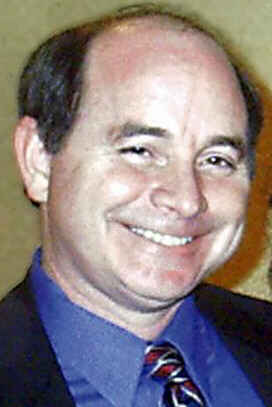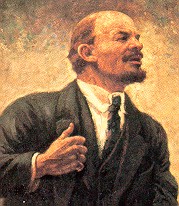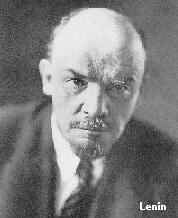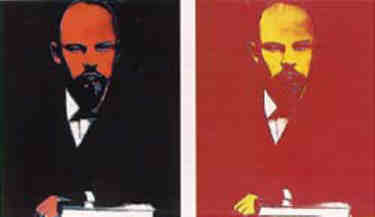 2000 El presidente de Ecuador Jamil Mahuad, huye del palacio
presidencial de Quito, acorralado por el asalto al poder protagonizado por
un grupo de militares y miles de indígenas.
2000 El presidente de Ecuador Jamil Mahuad, huye del palacio
presidencial de Quito, acorralado por el asalto al poder protagonizado por
un grupo de militares y miles de indígenas.2000 The grandmothers of Elian González, 6, travel to the United States to plead for the boy's return to Cuba. Photo: Raquel Rodriguez, left, and Mariela Quintana, the maternal and paternal grandmothers of six-year-old Cuban boy Elian Gonzalez, stand together at a news conference after their arrival at New York's Kennedy International Airport . The women said they came to press for Elian's return to Cuba, saying they wanted to "finish this tragedy." The National Council of Churches is assisting them. Why didn't Elian's father come? Why did they wait for two months before coming? Why did they go to New York? One can understand why they would be reluctant to go to Miami, where the boy is, but where the Cuban exiles have demonstrated in the streets to keep him in the US But why New York rather than Washington?
^ 1999 (Thursday) Clinton impeachment trial: Defense last day (Congressional Record)
(1) On the final day of its defense case, President Bill Clinton's legal team offers the Senate two contrasting lines of reasoning why it should not remove the president from office — one based on the "facts", the other on "common sense". Presidential attorney David Kendall spends much of his nearly three-hour presentation rebutting the House prosecutors' allegations that Clinton tried to influence Lewinsky's testimony in the Paula Jones sexual harassment case by asking her to lie and trying to get her a job to ensure her silence. Kendall specifically refutes the managers' assertion that in a late-night phone call on December 17, 1997, the president, knowing Lewinsky was on the witness list in the Paula Jones case, discussed cover stories with the former White House intern. Citing Lewinsky's February 1998 hand-written offer to testify, a July 1998 interview with the FBI and her August 1998 grand jury testimony, Kendall shows the Senate how Lewinsky repeatedly said she did not discuss cover stories with the president in regards to the Jones case. "Cover stories are an almost inevitable part of every improper relationship between two human beings," Kendall admits. "Now to say that is not to excuse it or to exonerate it or justify it, but rather to emphasize the testimony about 'visiting Betty' or 'bringing me letters' is in the record, but it is not linked in any way to the December 17 phone call or to any testimony or affidavit with regards to the Jones case."
The House managers' contention, Kendall says, boils down "to the inferences to be drawn from the uncontested fact that ... before this December 17th phone call, the president and Ms. Lewinsky had had discussions about what she should say if asked about her visits to the Oval Office." Using charts and timelines, Kendall argues that testimony, attorney billing records and phone records prove there was not a quid pro quo, job-for-silence conspiracy involving Clinton, Lewinsky and presidential friend Vernon Jordan. "Mr. Jordan testified unequivocally that he never at any time felt any particular pressure to get Ms. Lewinsky a job. This is plain and powerful and unrebutted testimony," Kendall tells senators.
Kendall also seeks to refute the allegation that Clinton obstructed justice by giving false accounts of his affair to his aides. Noting that Clinton made the same denials to his aides that he did in a nationally televised news conference, Kendall comments, "Having made this denial to the entire country, it's simply absurd to regard it any differently when made to four aides in the White House directly and person to person, rather than through the medium of television." In concluding his remarks, Kendall, whose aggressive and contentious manner has been often been criticized, praises the Senate's conduct. "I think that the bipartisan manner, however, you've conducted this impeachment trial is a welcome change from the For the last year," Kendall says. "We ask only that you give this case, and give this country, the constitutional stability and the political sanity which this country deserves."
After Kendall finishes, former Arkansas Sen. Dale Bumpers takes to the well of the Senate for a folksy speech, arguing that history and common sense should prevent his former colleagues from convicting Clinton. Bumpers, known as a gifted public speaker, is a longtime Clinton ally who has urged the president to forcefully fight the charges against him. Both Bumpers and Clinton are former governors of Arkansas. After six days of lawyerly arguments, Bumpers' folksy approach during the defense team's summation elicits some laughter from the senators who have been forced into silence during the trial. But his mostly serious appeal passionately argues for the Senate to show Clinton the human compassion the American people seem to have already extended the president. "We are none of us perfect," Bumpers says. "Sure, you say, he should have thought of all that beforehand. And indeed he should. Just as Adam and Eve should have." Noting that the founding fathers intended impeachment as a protection for the people, Bumpers pleads, "The people are saying, please don't protect us from this man; 76 percent of us think he's doing a fine job." And while he avoids suggesting the Senate vote "for or against the polls," Bumpers quotes from advice he said former President Harry Truman once gave him: "Put your faith in the people." "The American people are now and for some time have been asking to be allowed a good night's sleep. They're asking for an end to this nightmare. It is a legitimate request," Bumpers says. "So don't, for God's sakes, heighten people's alienation that is at an all-time high toward their government."
(2) Outside the Senate chamber, Rep. Asa Hutchinson (R-Arkansas), says he and other House prosecutors presented much more direct evidence than Kendall's statement indicated. Hutchinson laments that they were to be given no time to rebut the Clinton defense and reiterates his hope that witnesses would be allowed to testify. Hutchinson also tells reporters that one reason witnesses would be helpful was that the president was the last witness to testify in the investigation, so that the key witnesses had told their stories before Clinton's version was on the record.
(3) After six days of prosecution and defense opening statements, Democrats are declaring the Senate impeachment trial of President Bill Clinton all but over, while Republicans are still talking about calling witnesses. It would take 67 votes to remove Clinton from office, which would mean 12 Democrats and all 55 Republicans in the Senate would have to vote for conviction. Democrats maintain there is no way the president will be convicted and removed from office, and say members on both sides of the aisle are anxious to see the trial end. Dying to make a rebuttal Senate Majority Leader Trent Lott (R-Mississippi) dismisses reports that some Republicans are scrambling in search of a quick exit strategy as "spin from the Democrats." Lott does not close the door on the possibility of the Senate calling witnesses to give closed-door depositions to resolve any outstanding questions. "Clearly, there are conflicts in what has been said by the House managers and the White House," Lott says. "There appear to be conflicts between what the witnesses have said."
(4) Lead House prosecutor Henry Hyde writes Kenneth Starr today seeking his help with getting Monica Lewinsky to talk with the Senate trial managers. Lewinsky, though her lawyers, rejects being interviewed by the House team.
 Deaths
Deaths Il meurt dans sa maison de Gorki le 21 janvier 1924. Il a 53 ans.
Le maître d'oeuvre de la révolution bolchévik était paralysé depuis
un an et demi et avait dû renoncer peu à peu à l'exercice du pouvoir.
Mais il avait eu le temps d'installer la dictature de son parti après
le coup d'Etat d'Octobre 1917. Pendant la maladie de leur chef, les
hiérarques communistes se disputent la succession. C'est finalement
l'opportuniste Staline qui l'emporte grâce à sa position clé au secrétariat
général du parti. Il se rallie à la
Il meurt dans sa maison de Gorki le 21 janvier 1924. Il a 53 ans.
Le maître d'oeuvre de la révolution bolchévik était paralysé depuis
un an et demi et avait dû renoncer peu à peu à l'exercice du pouvoir.
Mais il avait eu le temps d'installer la dictature de son parti après
le coup d'Etat d'Octobre 1917. Pendant la maladie de leur chef, les
hiérarques communistes se disputent la succession. C'est finalement
l'opportuniste Staline qui l'emporte grâce à sa position clé au secrétariat
général du parti. Il se rallie à la  Fils d'un fonctionnaire anobli par le tsar, avec des ascendances mongole,
allemande, suédoise,... Lénine est issu de la nouvelle bourgeoisie
russe de la fin du tsarisme. La mort prématurée de son père et l'exécution
de son frère aîné en font un intellectuel déclassé. Avec sa compagne,
il découvre les mouvements révolutionnaires et la doctrine marxiste.
Son activisme lui vaut alors d'être condamné par la justice du tsar.
Fils d'un fonctionnaire anobli par le tsar, avec des ascendances mongole,
allemande, suédoise,... Lénine est issu de la nouvelle bourgeoisie
russe de la fin du tsarisme. La mort prématurée de son père et l'exécution
de son frère aîné en font un intellectuel déclassé. Avec sa compagne,
il découvre les mouvements révolutionnaires et la doctrine marxiste.
Son activisme lui vaut alors d'être condamné par la justice du tsar.
 [Lenin
(1986) by
[Lenin
(1986) by